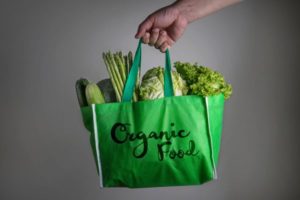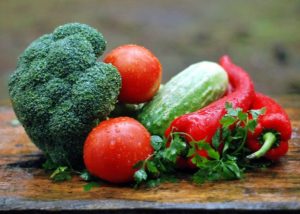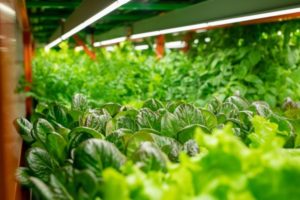
Vertical farming is rapidly becoming a reliable food production approach, especially in countries that suffer from a lack of natural resources such as land and water. In addition to its environmentally friendly properties, vertical farming is also gaining popularity and wide support due to its highly nutritious and fresh produce.
A vertical farm is able to grow fresh produce free of pesticides, herbicides, or artificial preservatives. In addition, scientific research has revealed that vertically grown crops have a richer nutrient profile than traditionally grown ones.
In this article, I will discuss six important reasons why vertically grown produce is regarded as a healthier and more nutritious option.
Free of pesticides and herbicides
Herbicides and pesticides are widely utilized by farmers worldwide to combat persistent pests and increase both yield quantity and quality. Approximately 2 million tonnes of pesticides are sprayed every year worldwide and according to the World Health Organization, pesticide residues can negatively impact human health, and in particular, the reproductive system. The majority of fresh produce has insignificant levels of pesticide residue, posing no health risks. However, exposure to residue levels that exceed the maximum residue level (MRL) can be harmful and detrimental to human health.
Furthermore, a recent study from the Environmental Working Group (EWG) revealed that nearly 75% of non-organic fresh produce sold in the U.S. contains pesticide residues. Among the crops with the highest pesticide load in 2021, there were leafy greens like kale, collards, mustard greens, celery, as well as popular crops such as strawberries, tomatoes, and bell peppers.
Pesticides are avoided completely in vertical farming since plants are grown in isolated and highly controlled environments where pests are unable to enter. In addition, vertical farms use sensors to monitor the humidity inside the grow chambers, thus reducing the likelihood of fungal diseases as well. As a result, vertical farming produces pesticide-free crops that are healthier and safer than those grown outdoors.
Highly nutritious and fresh food
Fresh produce loses significant amounts of nutrients during transportation and storage. Temperature, relative humidity, and storage time adversely affect the nutrient content, weight, and quality of fresh produce. To supply supermarkets with fresh, not spoiled food, growers harvest their crops before they reach full maturity, resulting in their nutrient composition being poorer than that of fruits allowed to ripen on the plant.
An analysis of the storage effect on nutrient value in 2007 found that vitamin C is the most susceptible to losses when compared to other nutrients. Furthermore, the results of another study show that spinach stored at room temperature loses about 50-90% of its Vitamin C content within 24 hours of harvest. Losses of Vitamin C after harvest is reported in strawberries and other leafy greens as well. Moreover, in a study analyzing the effects of storage time and transportation in lettuce in South Africa, researchers found that extended shelf life, high temperatures, and low relative humidity degraded the overall quality and the phytonutrient content of the crop.
The vast majority of vertical farms operate in urban areas, and they deliver their products within 24 hours of harvest, eliminating nutrient loss due to long-distance transportation or extended shelf life. In the UK, Growing Underground can deliver fresh produce within four hours of harvest, allowing their customers to consume fresh food with higher vitamin and mineral content.

Preservative Free Food
Currently, our global supply chain enables us to consume food produced thousands of kilometers away from our homes. For these food products to reach our plate fresh, they are treated with artificial preservatives such as wax coating to prevent bacterial and fungal growth. Fresh fruits are often coated in wax to preserve moisture and prevent the growth of microorganisms. In reality, however, most fruit waxes today are mixed with morpholine and its derivatives, which in combination with nitrate form a powerful carcinogenic compound known as N-nitrosomorpholine.
Vertical farming does not use food preservatives since the fresh produce makes its way from the farm to supermarket shelves and consumer tables in hours, even minutes, after harvesting. Vertical farmers can accurately predict when their crops will be harvested, which allows them to schedule their harvesting process and consumer deliveries accordingly. Also, several vertical farms such as UrbanKisaan offer their products online as well allowing their consumers to order fresh, preservative-free produce directly from home and have them delivered in a matter of minutes.
Grows Healthier Crops
Outdoor horizontal farmers must consider several environmental and economic factors before deciding on what type of crops to cultivate in their farms. The type of soil, weather conditions, and irrigation sources are just some of the many technical and environmental factors farmers should consider before choosing the right crop type for their project. In addition, they must also determine which crops will be economically viable and survive long transport distances. This greatly limits the types of crops they can grow.
A vertical farmer, on the other hand, can grow virtually any type of plant since they can adjust the farm’s growing conditions to match the plants’ specific requirements. Consequently, they are not constrained by unpredicted weather conditions, lack of natural resources, or by long transportation distances.
Lower Risk of Food Contamination
Before our favorite leafy greens and fruits land on the shelves of our local supermarkets, they undergo a number of steps such as production, processing, preparation, and transportation. The chances of contamination are high at every stage of their journey. Vegetables, for instance, can be contaminated before harvest if they are watered with contaminated water or sprayed with pesticides and herbicides.
Moreover, workers who are ill or do not follow strict hygiene protocols can also contaminate these crops during the processing and transportation processes. According to the World Health Organization, one in ten people, or roughly 600 million people worldwide, become ill after consuming contaminated food, with 420,000 of them dying every year.
Vertically grown crops have a relatively straightforward supply chain since the vertical farms usually deliver fresh produce directly to the consumers or supply local supermarkets. Moreover, vertical farms have employed robotic arms to carry out laborious tasks such as harvesting, thus eliminating, the risk of human contamination. In addition, vertical farms adhere to strict hygiene protocols, which minimize the risk of contamination during the growing process, packaging, and transportation.

Environment Can Be Adjusted to Enrich their Nutrient Content
Vertical farming differs from traditional farming in that crops are grown indoors in controlled environments, allowing the growers to tweak and adjust the growing conditions according to the plant’s needs. Many studies have shown that vertical farmers can manipulate environmental factors like LED lighting to alter the nutrient profiles of their crops. In a study on mustard, beets, and parsley, researchers found that the concentrations of carotenoids, alpha and beta carotene, lutein, and zeaxanthin were higher when these crops were grown under a higher blue light intensity.
Furthermore, a similar study reported that higher intensities of blue light impacted the nutritional quality of hydroponically grown kale plants, resulting in shorter plants and greater fresh mass. Vertical farms can now boost the nutrition profile of their crops by tweaking technical variables such as lighting.
